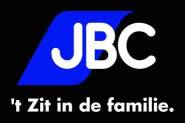James’s blog
Weekend Wig-Out: Eye-opener
20 Mar 11 | Re: A bold move
If you’ve been following the wig-outs over the last few weeks, or if you know about music generally, then you will know that wig-outs usually come near the end of an album, when the listener has been won over and is hopefully more likely to go with what might make challenging listening. How bold, then, how assured would a band have to be to put the wig-out right at the start of their debut album?
Allow me to present to you this week’s offering:
Talking to Clarry by the Bluetones And why not listen along.
This enjoyable wig-out does indeed come right at the beginning of the Bluetones’ debut album Expecting to Fly. According to the sleevenotes it was recorded a little bit after all the other tracks, but rather than cravenly tack it on the end, they bravely decided to put it right at the start, where it acts as a kind of overture to the whole LP. In doing so, they instantly show the listener that the confidence of the album’s title will be backed up by the music.
I suppose the Bluetones have a reputation as one of the more polite Britpop bands, mainly because the combination of clever lyrics and Mark Morriss’s delivery can at times be reminiscent of the Beautiful South. That does a disservice to the rest of the band, though, and in particular their Squire/Marr-like guitarist is massively overlooked and knows how to rock when required. He certainly shows that on this track, which alternates his patented Bluetones jangle with choppy, distorted, big chords and some fierce wah soloing neatly contributing to the indie wig-out tradition.
The song starts with the sound of jets (reference to the album title?) before fading up a bit of pensive jangle, which is soon joined by the choppy loudness mentioned above. The song’s actually quite heavy at times. The quiet-then-loud strategy continues through the first verse, after which comes a nice linking instrumental passage with a very brief guitar solo, and then the second verse. (The Bluetones may be unique in that their verses are always better than their choruses, so they are wise to avoid any kind of chorus here.)
After the second verse comes a bridge, which is the heaviest bit yet, as the lyrics take a darker turn, from comforting chats with an old friend to a confusing breakdown in communication. The heaviness is immediately offset by a somewhat incongrous folky passage; it may be my imagination, but I seem to hear a harpsichord here. Folk out of the way, the choppy riffing comes back, to be joined by squalling wah guitar and the wig-out’s main solo. Then the vocals rejoin us as the solo continues, so that Morriss-style shouting and wah growling take us through the coda and up to the last chord and feedback that end the tune.
What’s happening after three and a half minutes, when Scott Mills usually starts talking over the outro? We’re only at the end of the second verse. The verses are very long actually.
Time to rate this wig-out:
- Length: Nearly 7 minutes
- Time to first vocal: 1.14
- Longest instrumental section: 0.51
- Folky bits: 1
- Acts as overture to album: +1
- Gradually darkening lyrics: +1
- Restrained use of feedback: +1
- Possible harpsichord: +1
- Growling wah guitar: +1
Total wig-out points: 14. Not bad, but will anyone equal Gomez and Cornershop?
Posted by JOHN JONES at 12:47
[Or dive into the blarchive...]
